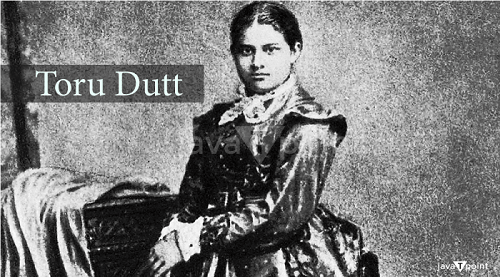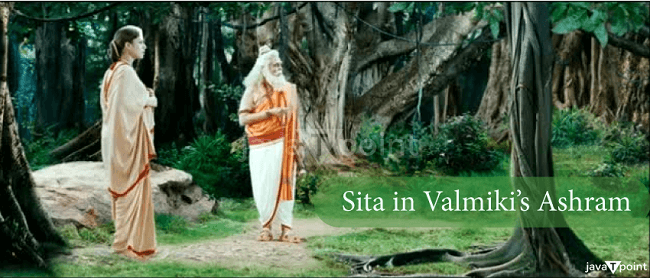Summary and Analysis of Sita Poem by Toru DuttIntroduction"Sita" was written by Toru Dutt. She is among the most well-known Indo-Anglian poets of the late 19th century. British Romantics greatly influenced her. She composed her poems, novels, and short stories in French and English. Her life was a mix of sorrow and happiness. Her most famous work was her original "Ancient Ballads and Legends of Hindustan," from which the poem "Sita" has been extracted. The poet died at age 22. 
The poem "Sita" reveals Toru Dutt's admiration for Indian mythology and her concern for women's suffering and victimization, even in ancient times. The poem is a part of the collection Ancient Ballads and Legends of Hindustan that was released after her death in 1882. It was accompanied by an introduction by Edmund Gosse, who wrote, "We believe that the original English poems which we present to the public for the first time today will be ultimately found to continue Toru's chief legacy to posterity." It is believed to be her finest work, which shows how deeply rooted she was in the foundations of Hindu philosophy and culture. Nine ballads are included in this collection that draws inspiration from Indian myths and stories "Savitri," "Lakshman," "Jogadhya Uma," "The Royal Ascetic and the Hind," "Dhruva," "Butto," "Sindhu," "Prahlad" and "Sita" and miscellaneous poems. These poems marked an entirely new stage with the growth of Toru Dutt's poetry in her desire to express her deep passion for her homeland and the traditions from which she was alienated for many years by French and English literature. One year of study in Sanskrit and the energy that she received from her memories of the stories related to religion by her mother brought her back into the heart of India. Haydn Moore Williams writes about these poems "Apart from her proficiency in English poetic forms, the poems demonstrate the development of a distinct poetic identity. The topics of these ballads are dazzling." Hari Mohan Prasad and Chakradhar Prasad Singh describe the collection as "an anthropological and philosophical study of culture and also a moral and religious instrument." The ballads aren't only full of philosophical ideas and moral empiricism, but they also showcase the poet's maturity in style, awe-inspiring expression, dramatic grittiness, narrative power, poetic simplicity, and romantic eloquence. C. N. Srinath paid tribute to the work of Toru in the following words: "The accomplishment is awe-inspiring considering the literary world of Toru was nearly a hundred years back, when she didn't have any poems from the local community to emulate, but faced all the challenges of being a new poet with older poets in her family, who modeled the traditional patterns and forms that were typical of English poetry. Toru was also an early pioneer of children's poems because she was the first poet to write Indian stories in English. The tone of the tale and the conscious simplicity of narrative suggests to the audience for whom it was probably meant, but the power and conceptual wisdom of the tale and the values that emerge out of the various struggles and tensions and the nobility of characters have a great spell on the adult imagination as well." Summary and Analysis of the PoemThis is the last ballad of the collection- Ancient Ballads and Legends of Hindustan- telling the tragic tale of Sita in The Ramayana narrated by her mother to Toru along with her brothers and sisters. They would listen to it with "wide-open eyes." Toru wrote to her French friend Clarisse Bader "Can there be any more heart-warming and charming heroine than Sita? No, I don't think so, as I listen to my mom sing in the evening the ancient rags of our nation. I always end up crying. The story of Sita, who is evicted for the second time, wanders in the forest in a state of despair, with horror that fills her heart with such a sad feeling that I'm convinced there's nobody else who has heard this without crying. The poem isn't an actual ballad in the traditional definition of the word since it doesn't have any narrative structure, and the lines are more suggestions and evocation rather than narrative. The poem opens with the poetess reminiscing about her mother's story of how she shared with her three kids, the woes suffered by Sita (at the mercy of her husband Rama), and how she was forced to the woods (on the exasperated voice of a watchman who was questioning her character) which is where she began being a hermit in the hermitage of the poet, anchorite Valmiki. 
It is a dramatic beginning of the poem, which shows "three smiling children in a room that is dark!" The way the mother creates before them the picture of the surrounding within the woods near the ashram that is the home of sage Valmiki can be seen in the poem in such a lively manner - an image which allows us to see clearly what the scene of the hermitage looks. The lines are- A dense, dense forest, where no sunbeam pries, And in its centre, a cleared spot. - There bloom Gigantic flowers on creepers that embrace Tall trees; there, in a quiet lucid lake The white swans glide; there, "whirring from the brake," The peacock springs; their herds of wild deer race; There, patches gleam with yellow waving grain; There dwells in peace, the poet-anchorite. The dramatic setting is further evoked, and the audience is stimulated by the query, "But who is this beautiful woman?" who is told to be "weeping" but "not without cause." The motives behind her tears were not stated and are left for the readers to recall from the biblical context. The effect of this tale of "weeping" Sita as narrated by Toru's mother (who may also shed tears when she tells the story) is so compelling and profound on the three children that- Tears from three pairs of young eyes fall amain, And bowed in sorrow are the three young heads, Although Toru's mother was sharing other tales drawn from Hindu Scriptures, while she was narrating this story, being an adult woman and mother, she always appeared to have sympathized with the suffering of Sita, who was then expecting a child, and like many other women who were a victim of a patriarchal structure. The following three lines show that even though the mother who saw her children crying interrupted the story and then melted "the images" of the tragic Sita "from the children's eyes," however Toru realized that it would leave lasting effects on the psyches of children that they could not forget it. "Dream of it until the day." In the final two lines, the poet, in nostalgia, thinks of her lost sister and brother, who will not be able to gather around their mother's side in order to hear this story. Critical CommentsK. R. Srinivas Iyengar describes this poetry as being "almost ideal" and calls it "a dedication to Toru's mother's ability to tell stories." The two last lines have been described by him as "a touching elegy to the premature death of Abju and Aru." Iyengar also states, "Never have Toru composed a poem more deeply or invoked a scene or emotions as vividly." The poet also describes this poem by Toru as an indefinable lamp that shines some light on the quality and depth of her soul. It's certainly full of pictorial imagery and demonstrates Toru's affection for nature as well as her capacity to communicate. "What oft was thought and felt" about women's plight "but never so well expressed." |
 For Videos Join Our Youtube Channel: Join Now
For Videos Join Our Youtube Channel: Join Now
Feedback
- Send your Feedback to [email protected]
Help Others, Please Share









